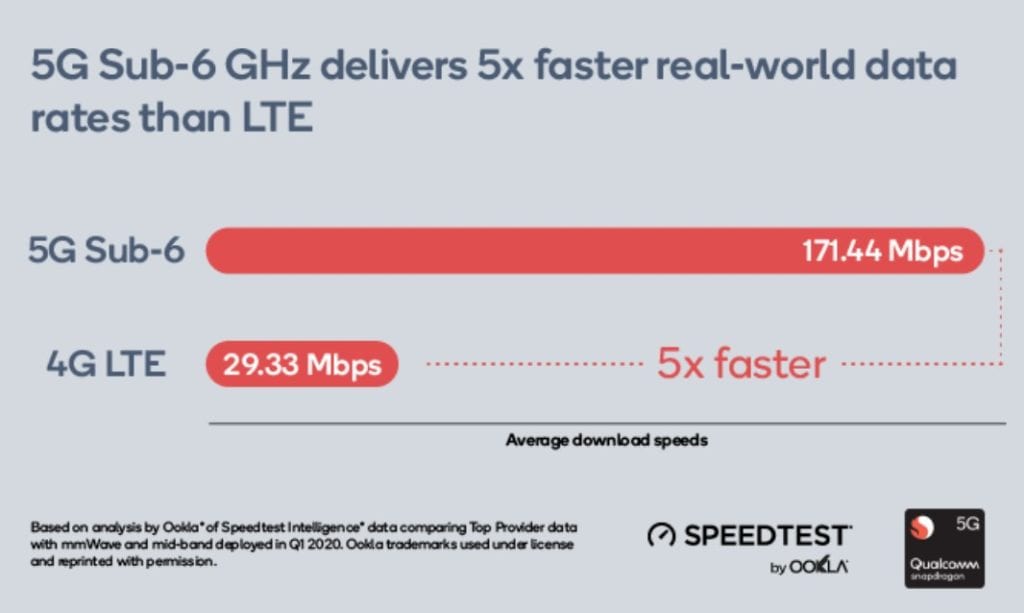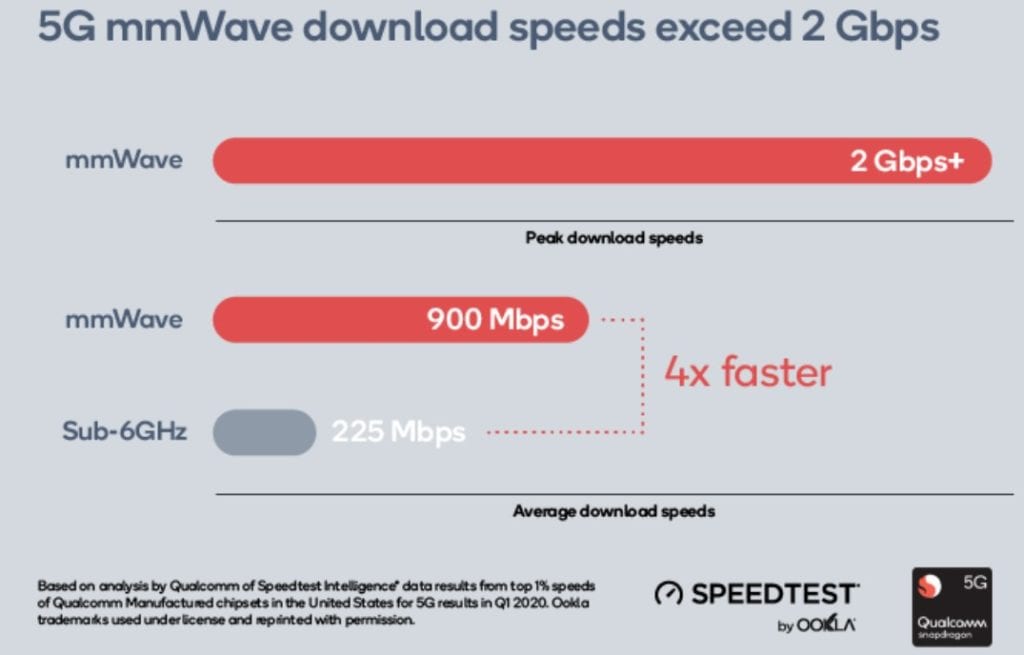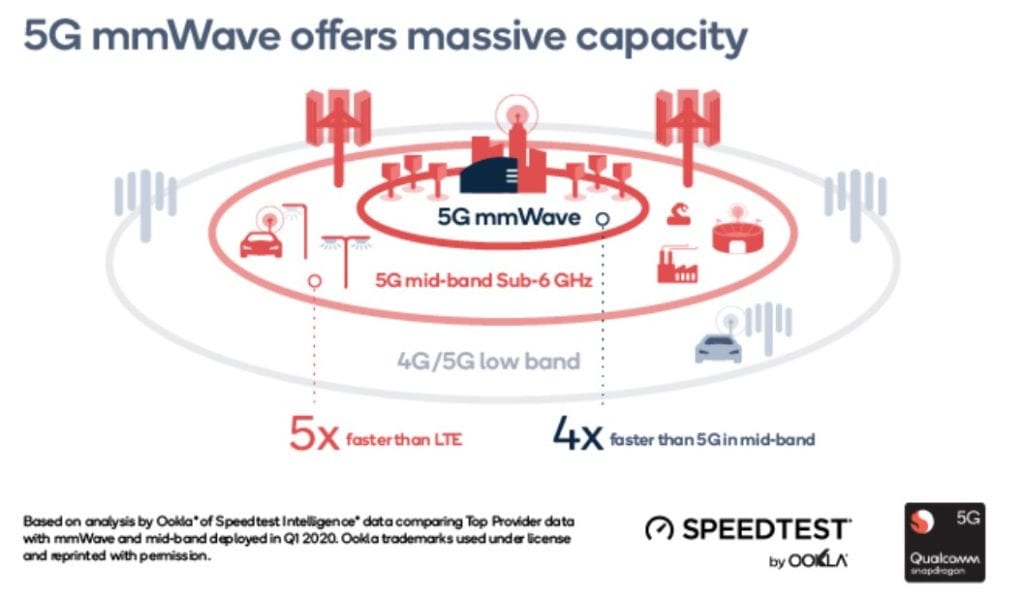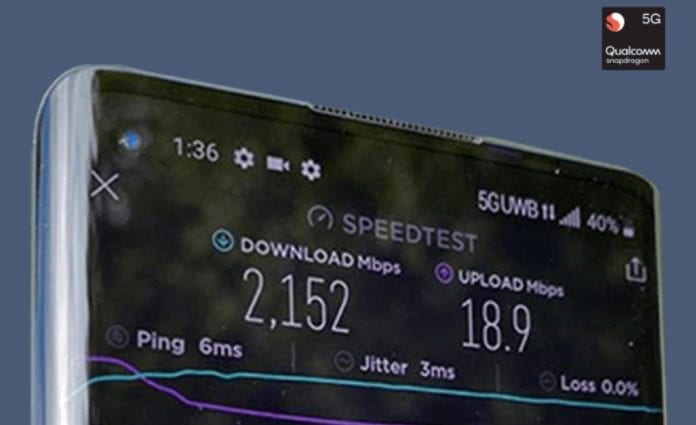It’s been a little over a year since Qualcomm first introduced the world to 5G. Today, better than ever before, the American company understands the importance and need for reliable, efficient, and fast connectivity. More than 375 designs based on this 5G solutions have been announced or are in development, and 5G is continuing to expand in over 60 commercial 5G networks in over 30 countries.
5G achieves substantially higher data rates than LTE
Recent analysis by Ookla, a global leader in mobile and broadband network intelligence, testing applications, and technology, found that in the United Kingdom, average 5G download speeds powered by Qualcomm Snapdragon Modem-RF Systems are 5x faster than those of 4G LTE.

This is a significant improvement for user experience. Consumers can enjoy better video streaming experiences on 5G. Downloading a game, movie, or other data-rich content will also be 5x faster on 5G than on LTE, which demonstrates a substantive increase in capacity. It means providing a better experience not only for those who use 5G devices, but to all users on the network. The increased capacity also allows for lower cost per bit, so network operators can offer unlimited data plans even as data consumption constantly increases. This is exciting news, especially since these numbers will continue to increase once mmWave is available in Europe and other regions.
New opportunities with mmWave
According to a report by OFCOM, average monthly use per mobile data connection in 2018 increased by 25% to 2.9 GB compared to the year before. Vodafone’s internet usage has surged by up to 50 percent in some European countries. In the U.K., data usage went up 30 percent and is likely to continue rising. To accommodate this growing demand, more spectrum is needed to keep people adequately connected, and mmWave can provide it in abundance.
The Ookla analysis revealed that in the United States, mmWave 5G devices powered by Snapdragon Modem-RF Systems deliver lightning-fast speeds in excess of 2 Gbps, with average download speeds of more than 900 Mbps. That’s over 4x faster than 5G speeds in mid-band spectrum and a substantial improvement over the 4G LTE.

These speeds were achieved on current mmWave spectrum deployments at 400 MHz. Anticipated mmWave spectrum deployments at 800 MHz, which is already supported by Snapdragon 5G products, can potentially double these speeds.
In order to fulfil the 5G promise – multi-gigabit data rates, capacity, coverage, and low latency, operators will roll out 5G in low-, mid-, and high-band spectrums. While mid-band spectrum provides a balance of coverage and capacity, mmWave delivers multi-gigabit speeds and massive capacity.

The connectivity technology also lends itself to a variety of applications. With more than 80 percent of mobile data traffic originating or terminating indoors, one opportunity is to bring mmWave services to indoor locations. Due to the propagation characteristics of mmWave, mobile operators could consider deploying the 5G technology indoors since the same mmWave spectrum can be reused inside. Private indoor mmWave networks could bring multi-gigabit speeds, ultra-low latency, and massive capacity to a wide range of indoor environments, such as enterprises, venues, and transportation hubs.
Another application for mmWave is Fixed Wireless Access (FWA), an alternative to traditional broadband delivering fast internet directly into homes. According to Ookla, traditional broadband provides average download speeds of only 74.74 Mbps across the globe. With the current spikes in streaming, gaming, and video calling services, service providers are struggling to accommodate traffic demand while maintaining the quality of service their customers expect. mmWave is designed to address this demand, so we predict momentum in 5G mmWave FWA adoption will increase.
A growing range of countries and companies are moving to support 5G in mmWave spectrums, European countries begin to adopt mmWave. Also, Italy and Russia have increased mmWave support, while other EU countries have scheduled mmWave auctions later this year. The analysts observed a similar momentum among other operators around the world. Operators from South Korea to Japan to Australia to others in Southeast Asia are rolling out 5G on mmWave spectrum within this year and next year.
mmWave is the key to realizing the full potential of 5G. When augmented with sub-6 GHz coverage, it provides an extreme capacity layer with large amounts of spectrum that are potentially available for extremely high capacity and high data rates. It’s no wonder network operators are continuing to deploy both sub-6 GHz and mmWave. Qualcomm leadership in 5G allows company to invent the breakthrough technologies that help customers deliver the new and exciting mobile experiences users deserve. And according to Ookla data, experiences powered by the full, end-to-end RF systems, with support for both mmWave and sub-6 GHz are superior in terms of speed means Snapdragon.







